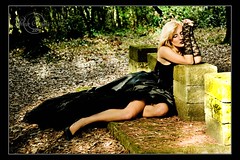Celtic Wicca – A Unique and Intricate Path
If you know anything about word etymology, you would know that the word “Celtic” is derived from the Greek word “Keltoi” and it refers to the people who lived beyond the Alps. In modern geography, Keltoi included France, Germany and northern Italy; but did not originally include Scotland, Ireland, Wales and England as the Greeks were unaware of its existence altogether.
The terms “Celtic Wicca” and “Celtic Witchcraft” are often used interchangeably, but are in truth not one and the same. Wicca is a modern neo-pagan movement, founded by Gerald Gardner. Celtic Wicca refers to a specific Wiccan path which incorporates several of the elements of the Celtic Tradition into their practices, beliefs and rituals. Celtic Witchcraft, on the other hand, is the traditional Craft as practiced by Celtic Witches for centuries, perhaps even millennia. There are sadly very few of the original and truly traditional Celtic Witches around today.
The traditions, practices and beliefs of Celtic Wicca are relatively diverse and to some extent dependent on the lineage of the coven. Each coven within a single lineage may also have their own special deities, rituals, traditions, practices and beliefs. The very nature of Wicca promotes eclecticism – irrespective of the path that is followed.
Strong spirituality, a reverence for the Earth and respect for everything the earth contains, form the basis of Celtic Wicca. An integral part of this religion is the love for and worship of Celtic Goddesses and Gods.
The pantheon is three tiered. On the first tier you will find the children and subjects of Danu / Anu (the Mother Goddess) and Dagda (the Father God). On the second tier are the children
Pages: 1 2
